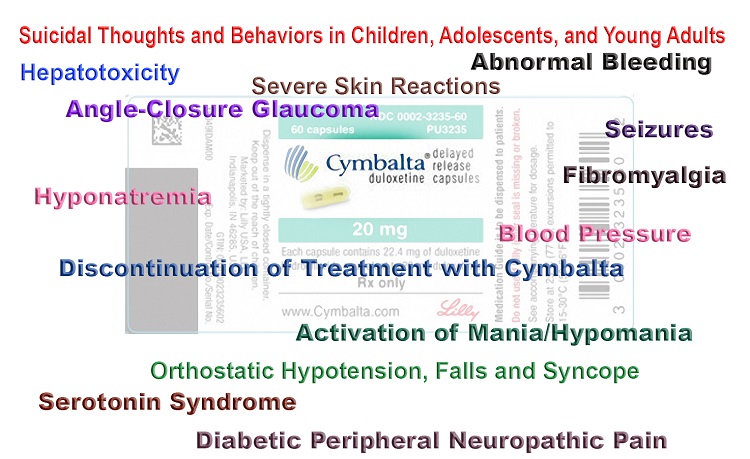Fluoroquinolone antibiotics, Cipro, Levaquin, Avelox, etc. are broad-spectrum antibiotics used to treat a variety of infections, from urinary tract infections to anthrax and everything in between. The first quinolone created was Nalidixic Acid which was discovered by George Lesher in 1962. (Nalidixic Acid was added to the OEHHA prop 65 list of carcinogens in 1998.) Cipro (ciprofloxacin) is a second generation fluoroquinolone patented in 1983 by Bayer, Levaquin (levofloxacin) is a third generation fluroquinolone patented in 1987 by Ortho-McNeil-Janssen (a division of Johnson & Johnson), and Avelox (moxifloxacin) is a fourth generation fluoroquinolone patented in 1991 by Bayer.
Fluoroquinolone Antibiotics – Still on the Market
Of the 30 quinolones that have made it to market since the 1980s, all but 6 have either been removed from the US market or have severely restricted use.
The fluoroquinolone antibiotics that are still on the market are some of the most commonly prescribed antibiotics. Per the FDA, “Approximately 23.1 million unique patients received a dispensed prescription for an oral fluoroquinolone product from outpatient retail pharmacies during 2011,” and “Within the hospital setting, there were approximately 3.8 million unique patients billed for an injectable fluoroquinolone product during 2011.”
When used properly, such as in cases of life-threatening hospital acquired pneumonia, fluroquinolone antibiotics can save lives.
Fluoroquinolone Antibiotic Side-Effects and Adverse Reactions
When used improperly, fluoroquinolone antibiotics can needlessly cause devastating side-effects. Devastating side-effects can also occur when fluoroquinolone antibiotics are used properly, but the devastation can be justified by weighing it against the alternative – death. In 2001, Dr. Jay S. Cohen published an article on the severe and often disabling reactions some people sustained as a result of taking a fluoroquinolone antibiotic. Dr. Cohen says,
“It is difficult to describe the severity of these reactions. They are devastating. Many of the people in my study were healthy before their reactions. Some were high intensity athletes. Suddenly they were disabled, in terrible pain, unable to work, walk, or sleep.”
Dr. Cohen’s study of 45 subjects suffering from Fluoroquinolone Toxicity Syndrome, a name that I’m pushing for, (without an official name, it is difficult get the word out) showed that they had the following symptoms:
- Peripheral Nervous System: Tingling, numbness, prickling, burning pain, pins/needles sensation, electrical or shooting pain, skin crawling, sensation, hyperesthesia, hypoesthesia, allodynia (sensitivity to touch) numbness, weakness, twitching, tremors, spasms.
- Central Nervous System: Dizziness, malaise, weakness, impaired coordination, nightmares, insomnia, headaches, agitation, anxiety, panic attacks, disorientation, impaired concentration or memory, confusion, depersonalization, hallucinations, psychoses.
- Musculoskeletal: Muscle pain, weakness, soreness, joint swelling, pain, tendon pain, ruptures.
- Special Senses: Diminished or altered visual, olfactory, auditory functioning, tinnitus (ringing in the ears).
- Cardiovascular: Tachycardia, shortness of breath, hypertension, palpitations, chest pain.
- Skin: Rash, swelling, hair loss, sweating, intolerance to heat and\or cold.
- Gastrointestinal: Nausea, vomiting, diarrhea, abdominal pain.
When a fluoroquinolone antibiotic triggers a toxic reaction in a person, multiple symptoms are often experienced. I experienced all of the symptoms that are italicized.
Fluoroquinolone Antibiotic Damage – Technical Aspects
Fluoroquinolones are eukaryotic DNA gyrase and topoisomerase inhibitors very similar to many antineoplastic agents (source). What this means in plain English is that these drugs work the same way as chemotherapeutic drugs; they disrupt DNA and lead to destruction of cells. A recent (2013) study conducted by a team of scientists at the Wyss Institute for Biologically Inspired Engineering at Harvard University Studies showed that Ciprofloxacin, along with a couple of other non-fluoroquinolone antibiotics, causes oxidative stress and mitochondrial malfunction. A 2011 study published in the Journal of Young Pharmacists found that, “There is significant and gradual elevation of lipid peroxide levels in patients on ciprofloxacin and levofloxacin.” They also found that “There was substantial depletion in both SOD (superoxide dismutase, “a free radical scavenging enzyme”) and glutathione levels” and that “On the 5th day of treatment, plasma antioxidant status decreased by 77.6%, 50.5% (and) 7.56% for ciprofloxacin, levofloxacin and gatifloxacin respectively.” The study also notes that administration of fluoroquinolones leads to a marked increase in the formation of Reactive Oxygen Species (ROS) and that “reactive free radicals overwhelms the antioxidant defence, lipid peroxidation of the cell membrane occurs. This causes disturbances in cell integrity leading to cell damage/death.”
How Many People are at Risk?
The exact rate of adverse reactions to fluoroquinolones is difficult to determine. Studies of adverse reactions to fluoroquinolones have noted that, “During clinical trials, the overall frequencies of adverse effects associated with (fluoroquinolones) to vary between 4.4 and 20%.” Just the fact that the spread is so large, a 15.6% spread in frequency of adverse reactions is a HUGE difference, implies that the actual occurrence of adverse reactions is difficult to establish or unknown.
With the FDA figures above noting that 26.9 million unique patients were given fluoroquinolones in 2011, if you just take the conservative adverse reaction figure of 4.4%, you’ll get a horrifying number of people with adverse reactions in 2011 alone – 1,183,600 people. 20% of 26.9 million is 5,380,000 people adversely effected. That is scary. Those numbers are truly frightening given the severity of the adverse effects described above.
Fluoroquinolone Toxicity Syndrome
I see fluoroquinolone toxicity everywhere, and even I think that those numbers are high for severe, disabling reactions like mine where multiple symptoms develop simultaneously. Not everyone who has an adverse reaction to a fluoroquinolone has a reaction like mine, or even develops Fluoroquinolone Toxicity Syndrome – thank God. Many people have milder reactions. Milder symptoms include any one of the symptoms listed above as well as diarrhea, vomiting, mild tendonitis, decreased energy, painless muscle twitches, memory loss, urgency of urination, or any number of reactions that the body may have to a massive depletion of antioxidants and increases in lipid peroxide levels and reactive oxygen species production.
Even though severe adverse reactions to fluoroquinolones antibiotics can be painful and disabling for years, many (possibly most, but certainly not all) people recover from Fluoroquinolone Toxicity Syndrome with time. I anticipate that I will be fully recovered 2 years after my reaction started. Sadly, there are some people who don’t recover. They suffer from chronic pain, disability, impaired cognitive abilities, etc. permanently.
It is absurd, to say the least, that an acute problem, an infection, that can easily be taken care of with administration of an antibiotic that is not a fluoroquinolone, is converted into a chronic problem, a syndrome that can disable a person for years, by a prescription ANTIBIOTIC, used as prescribed. In my case, a urinary tract infection that could have likely been taken care of with macrobid or even cranberry juice and d-mannos, was treated with Cipro which left me unable to do many physical and mental tasks that I had previously been able to do with ease. It’s a crazy, absurd situation. It’s absurd and it’s wrong.
Some Antibiotics are More Dangerous than Others
The bottom line is that these popularly prescribed antibiotics are dangerous drugs that have caused thousands of people to suffer with a myriad of maladies. Undeniably, they have their place, in treating life-threatening infections. Unfortunately, they are not being reserved for use in life-threatening situations and people are being hurt after taking them for simple sinus, urinary tract, bronchial and prostate infections. A strict and rigorous protocol needs to be established to limit the damage that they cause; because it’s not right to maim and disable people to treat their sinus infections.
Information about Fluoroquinolone Toxicity
Information about the author, and adverse reactions to fluoroquinolone antibiotics (Cipro/ciprofloxacin, Levaquin/levofloxacin, Avelox/moxifloxacin and Floxin/ofloxacin) can be found on Lisa Bloomquist’s site, www.floxiehope.com.
This article was published previously in August 2013 and is being re-posted in light of the recent press coverage warning of fluoroquinolone dangers.











Lewis, have since recovered? How are you doing now?
Anladım ki.
Lisa I think this all just happened to me over just having a bladder infection. At best I should have been pre warned or given some kind of alternative antibiotic. Tonihght I ate the last dosage of Cipro that I will ever ingest knowingly. Three days after ingesting the first I began experiencing some pain on my neck by my thyroid but of course didn’t correlate the two. Over night the pain went from the right side of my neck to the left and localized with a very tender area on the front tip of my collarbone. It was very severe at times impairing movement of my left arm as well. After putting a shout out on Facebook with my friends I receive a post showing and explaining it all in black and white. I feel I got grazed by a bullet on this one but still hopefully have dodged the full impact of what it could have been. More about this needs to people put out in bold print as well as lawsuits for not being pre warned about very possible effects from Cipro. It’s funny that my warnings all came from two informed and concerned friends of whom I will always be grateful. With the millions of doses prescribed yearly one would think that those writing the prescriptions would be more concerned of what they were prescribing as well as truly concerned for those ingesting the drugs prescribed. My inert trust of Big Pharma was already waning. This ordeal just tipped the scale. Thank you for the time taken to post this article. More needs to be done as the suffering has to be immense. Peace.
chemobrain after chemotherapy is the same what I got after taking cipro the cognitive and memory impairment long term after cipro taking
Thanks for spreading the word on this serious issue. It’s appalling how pervasive and casual the use of quinolones/fluoroquinolones still is. I recommend saving the Comprehensive Quinolone List and Billiam James‘s ‘The Truth of Floxing‘ illustration for reference.